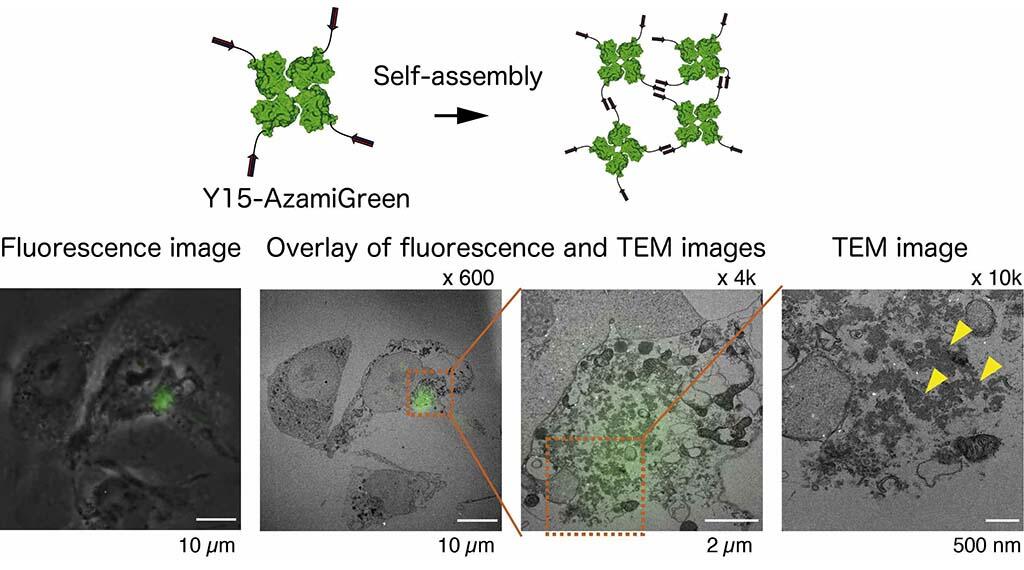The research group of Assistant Professor Takayuki Miki and Professor Hisakazu Mihara of the Department of Life Science and Technology of the School of Life Science and Technology at Tokyo Institute of Technology successfully developed a technology to collect self-assembling peptides and to create artificial organelles (cell organelles) with unique functions.
Some membrane-less organelles, structures present in the cell, are formed by the assembly of proteins with β-sheet structures. The research group had previously developed artificial peptides that assemble to form β-sheet structures. They expanded on this and focused on a self-assembling peptide that spontaneously forms a regular assembly with specific structures.
Based on the peptide design guidelines, the research group developed the Y15 peptide, which intracellularly forms protein assemblies with biological functions. The Y15 peptide comprises a series of 15 amino acids with a completely artificial sequence (amino acid sequence: YEYKYEYKYEYKYEY, Y: tyrosine, E: glutamic acid, K: lysine) and has a linear β-sheet structure, which self-assembles into fibrous structures. By tagging any protein that you want to accumulate with the Y15 peptide, it is possible to create a protein aggregate in the cell.

Credit: Tokyo Institute of Technology T. Miki, T. Nakai, M. Hashimoto, T. Kajiwara, H. Tsutsumi and H. Mihara: Intracellular artificial supramolecules based on de novo designed Y15 peptides, Nat Commun 12, 3412 (2021)
Methods for producing and evaluating intracellular peptide assemblies had not been previously established, but the research group demonstrated the formation of intracellular peptide assemblies through multifaceted studies, such as genetic engineering, spectroscopy, molecular biology techniques, and microscopic observation. This has the potential to be a basic technology to design and construct artificial organelles with desired functions. There are expectations for it to be applied to cell engineering and cell therapy in the future.
Assistant Professor Miki says, "The relationship between peptide sequences and intracellular assembly formation still remains largely unclear. Intracellular peptide assemblies can become a basic technology for creating desired structures and biological functions with the establishment of their design guidelines. These assemblies can be potentially applied to cell-based medical treatment in the future."
- ■ Membrane-less organelle: A structure without a membrane formed by the interaction of proteins and nucleic acids.
- ■ β-sheet structure: One of the secondary structures of proteins. They are zigzag linear structures formed by the interaction of multiple elongated peptide chains in parallel or antiparallel direction.
This article has been translated by JST with permission from The Science News Ltd.(https://sci-news.co.jp/). Unauthorized reproduction of the article and photographs is prohibited.




